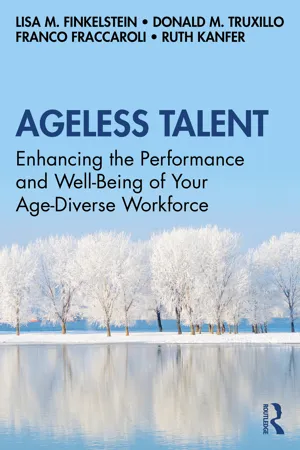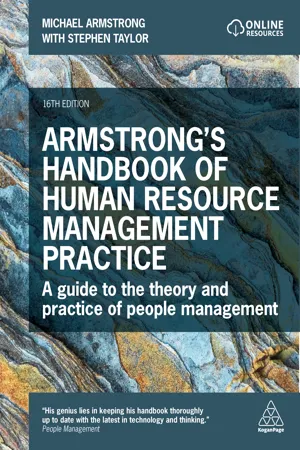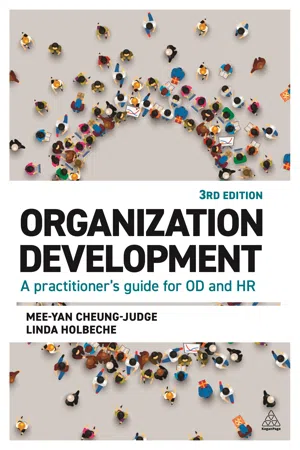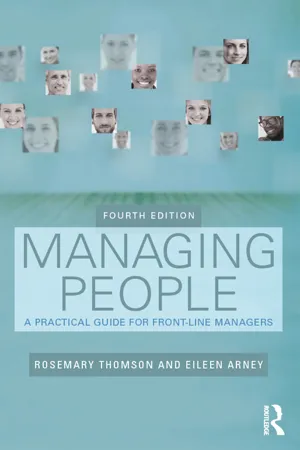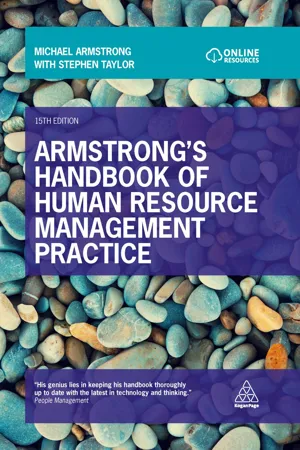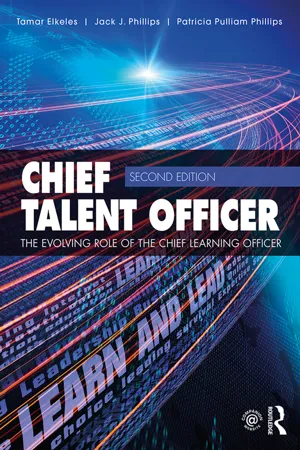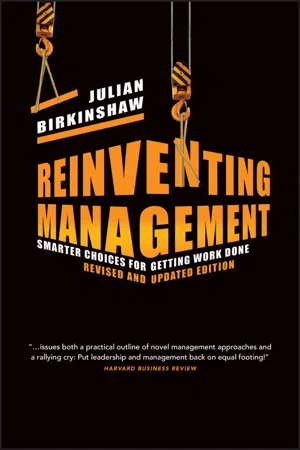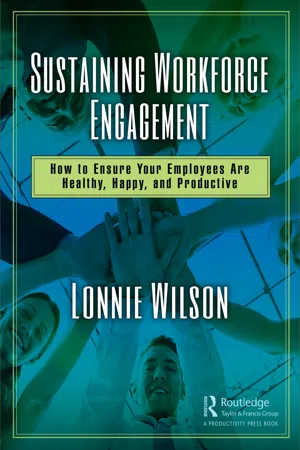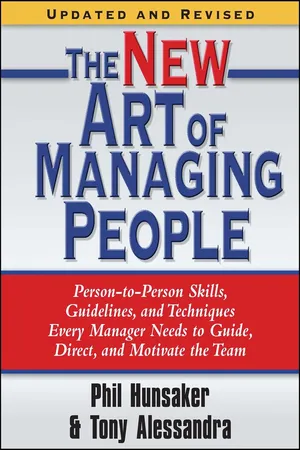Business
Motivating & Engaging Employees
Motivating and engaging employees involves creating a work environment that encourages enthusiasm, commitment, and productivity. This can be achieved through recognition, providing opportunities for growth and development, fostering a positive company culture, and offering meaningful rewards and incentives. Effective employee motivation and engagement are essential for driving organizational success and maintaining a high-performing workforce.
Written by Perlego with AI-assistance
Related key terms
Related key terms
1 of 4
Related key terms
1 of 3
10 Key excerpts on "Motivating & Engaging Employees"
- eBook - ePub
Ageless Talent
Enhancing the Performance and Well-Being of Your Age-Diverse Workforce
- Lisa M. Finkelstein, Donald M. Truxillo, Franco Fraccaroli, Ruth Kanfer(Authors)
- 2021(Publication Date)
- Routledge(Publisher)
Beyond work motivation, engaged employees often work hard in part out of a felt commitment to help accomplish an organization's goals. Engaged employees often share the same goals as their organization or unit. They exert effort not just for the rewards associated with personal success, but for the intrinsic and extrinsic rewards associated with seeing their unit or organization succeed. 7 In many modern organizations, the manager's goal is not just to motivate employees, but to build employee engagement. Research findings show that engagement can be increased by improving the employee's capabilities and well-being, including feelings of work involvement, self-esteem, and the experience of positive emotions. 8 Increasing employee engagement (rather than focusing exclusively on work motivation) is an effective means of enhancing employee performance, particularly among late-career employees. Now that you understand the basics of motivation and engagement, let's take stock of how you currently use resources at your disposal to motivate and engage your employees. Special Focus Box 3.1 contains examples of rewards and strategies managers routinely use to enhance motivation and engagement. How many of these strategies do you use? Special Focus Box 3.2 contains a brief exercise to help you reflect on your strategy profile - eBook - ePub
- John Gennard, Graham Judge, Tony Bennett, Richard Saundry(Authors)
- 2016(Publication Date)
- CIPD - Kogan Page(Publisher)
Nonetheless, employee engagement is difficult to pin down, with MacLeod and, Clarke (2009) identifying 50 different definitions. While some commentators see engagement as a set of processes and strategies, it is perhaps more useful to see engagement as an outcome of managerial behaviors. However engagement is defined, it is clear that it has a number of dimensions and that what motivates one group of employees may differ from what motivates another. One size does not fit all. Managers have to understand the motivators of engagement in the different parts of the business.MacLeod and Clarke (2009) have suggested that engagement is underpinned by four key enablers: organisational integrity, leadership, engaging managers and employee voice. Subsequent recent research has underlined the importance of these factors (Dromey, 2014). There is a strong story to be told about the link between employee engagement and positive outcomes – better financial performance, lower absence and sickness rates and higher productivity. The research shows that in unlocking discretionary effort from staff, respected leadership and a strong sense of organisational identity are important. But while senior leaders within an organisation can set the context for high levels of employee engagement, this will ultimately depend on the experiences of employees on the front line.Disengaged employees tend to feel insecure; have little autonomy in doing their work; feel they are treated unfairly, especially in rewards; may be subject to bullying and harassment; and are not listened to or respected. Given the increased role for managing people assigned to line managers, whether they communicate with and support their staff, create a sense of fairness and equity and crucially involve staff in decision-making would seem to be critical in influencing the degree of engagement.KEY LEARNING POINTS
- Employee engagement is difficult to define; however, it is most accurately seen as an outcome of managerial actions and activity. While it can be secured by specific ‘engagement strategies’, it is also underpinned by the way in which organisational processes and activities are designed and enacted.
- eBook - ePub
Armstrong's Handbook of Human Resource Management Practice
A Guide to the Theory and Practice of People Management
- Michael Armstrong, Stephen Taylor(Authors)
- 2023(Publication Date)
- Kogan Page(Publisher)
The problems set out above may mean that engagement programmes can be matters of faith. They could involve doing a number of seemingly useful and necessary things but the hoped-for results are not guaranteed. However, that does not mean that the attempt should not be made.Key learning points The meaning of employee engagementEngagement happens when people are committed to their work and the organization and are motivated to achieve high levels of performance. It has two interrelated aspects: (1) job engagement, which takes place when employees exercise discretionary effort because they find their jobs interesting, challenging and rewarding; and (2) organizational engagement, when they identify with the values and purpose of their organization and believe that it is a great place in which to work and to continue to work.Components of engagement The components of engagement are commitment, organizational citizenship behaviour, motivation and job satisfaction. Theory of engagement Engagement will have behavioural outcomes leading to what can be described as an ‘engaged employee’. A strong theoretical rationale for engagement is provided by social exchange theory. Drivers of engagementMacey et al (2009) emphasize the importance of the work environment and the jobs people do. Alfes et al (2010) established that the main drivers of engagement are meaningful work (the most important), senior management vision and communication, positive perceptions of one’s line manager and employee voice – employees having a say in matters that concern them. - eBook - ePub
Organization Development
A Practitioner's Guide for OD and HR
- Mee-Yan Cheung-Judge, Linda Holbeche(Authors)
- 2021(Publication Date)
- Kogan Page(Publisher)
So if organizations and their workforces are to thrive in changing times there must be a better balance between corporate and individual needs. Employers should aim to develop employment relationships based on fair and adult–adult, rather than paternalistic and ultimately instrumental parent–child assumptions. Employers who are forward looking, who sustain their investment in people and continue to develop the abilities of their workforce are likely to maintain their competitiveness and be well positioned for growth since they will motivate and retain valued employees. After all, employees will welcome change if, as a result, they work in a positive environment, are part of a winning team, are more capable and empowered, have learnt from their experiences and have the tools to be self-managing. Ensuring mutual benefits (as well as risks) for both organizations and employees is potentially a more sustainable and honest basis for an employment relationship that is better suited to the demands of today’s volatile global economy.The engagement–performance potential is there – delivering the results is a shared effort involving leaders, managers, HR/OD, internal communications and employees themselves since employee engagement flows up, down and across the organization. There is no short cut to building and maintaining employee engagement, but the time, effort and resource investment required will be amply repaid by the performance, health and reputational benefits that should endure over time. With an uplifting and energizing purpose, employee engagement at the heart of its culture, effective leadership, management and followership, any organization and its employees can become change-able and achieve the win–win outcomes they deserve.In the next chapter we shall consider how to develop the kinds of leadership fit for the 21st century. - eBook - ePub
Managing People
A Practical Guide for Front-line Managers
- Rosemary Thomson, Eileen Arney, Andrew Thomson(Authors)
- 2015(Publication Date)
- Routledge(Publisher)
Chapter 7 .You will also need to take into account the varying skills and needs of those you manage. In the last section of this chapter you will read about managing and getting the most out of a diverse workforce.In this chapter we will be considering: • employee engagement and why it matters • your role as a front-line manager • motivation and job satisfaction • job design • alternative methods of organising work • managing a diverse workforce. Employee engagement and why it mattersEngaged workers are committed to doing their job well and demonstrate this by making an extra effort to achieve a good result. This willingness to do more than required (sometimes referred to as discretionary effort) can make a considerable difference to an organisation’s performance and a great deal of research has been done in recent years to identify what organisations and managers can do to achieve this result. It is important to note that engagement means more than just being satisfied: Storey and others (2009) point out that satisfaction relates to how much workers like their jobs, but that it is quite possible to like a job without working hard at it. Engagement can be defined as ‘a set of positive attitudes and behaviours enabling high performance of a kind which is in tune with the organisation’s mission’ (Open University 2014: 1).Employee engagement is seen as so important in producing high performance in the workplace that the government commissioned a review led by David McLeod to explore it and its potential benefits both for organisations and for those who work in them. The subsequent report observed that if the workforce is to be engaged, four things need to be in place: - Michael Armstrong, Stephen Taylor(Authors)
- 2020(Publication Date)
- Kogan Page(Publisher)
Academy of Management Journal article by William Kahn. He defined engagement as ‘the harnessing of organization members’ selves to their work roles’ (1990: 694).The construct of engagement contains elements of motivation and commitment. It also embraces the notion of organizational citizenship behaviour (OCB), which is positive discretionary behaviour at work that goes beyond role requirements.It can be difficult to disentangle the concepts of motivation, commitment and engagement, although an attempt to do so is made in the three chapters of this part. Simplistically, it could be argued that when motivation is extrinsic, ie when things are done to or for people in order to motivate them, such as through pay or recognition, the aim is to make a direct impact on individual performance. In contrast, both commitment and engagement are states of being that can be affected by managerial actions. They are not so direct or immediate as the direct instruments used in the motivation strategies aimed at individuals. Engagement and commitment strategies may be more about taking action that affects employees collectively such as improvements in the work environment.Three other aspects of the behaviour of people at work are considered in this part. The first of these is job satisfaction, ie the attitudes and feelings that people have about their jobs. This is associated with motivation and engagement but it could be regarded as an outcome of engagement rather than a constituent of it. Whether or not job satisfaction improves performance is considered in Chapters 24 and 26 . Second, the relationship between money and motivation is examined in Chapter 24 . This is important because it affects policies and practices concerned with the use of pay as an incentive or reward. Third, reference is made in Chapter 26 to the dark side of engagement – burnout – how it happens and what can be done about it. In addition the increasingly popular concept of ‘the employee experience’ and its relationship to engagement is examined in Chapter 26- eBook - ePub
Chief Talent Officer
The Evolving Role of the Chief Learning Officer
- Tamar Elkeles, Jack J. Phillips(Authors)
- 2016(Publication Date)
- Routledge(Publisher)
- The independent, quasi-judicial agency in the executive branch of the U.S. government, the U.S. Merit Systems Protection Board, states, “Employee engagement is a heightened connection between employees and their work, their organization, or the people they work for or with.”
- According to management consultancy and executive search firm Korn Ferry, “Employee engagement is a mindset in which employees take personal stake holder responsibility for the success of the organization and apply discretionary efforts aligned with its goals.”29
These definitions suggest both alignment with the organization as well as the willingness to expend discretionary effort as critical components of employee engagement. Further, the Gallup Organization delineates three types of employees as follows:- Engaged employees work with passion and feel a profound connection to their company. They drive innovation and move the organization forward.
- Not-engaged employees are essentially “checked out.” They’re sleepwalking through their workday, putting time – but not energy or passion – into their work.
- Actively disengaged employees aren’t just unhappy at work; they’re busy acting out their unhappiness. Every day, these workers undermine what their engaged coworkers accomplish.30
Of note, one of the more recent developments in this space has been a focus on “well-being,” which links engagement to health issues as part of a movement toward holistic work environments. Another development is a focus on “happiness,” which seeks a holistic approach to worker contentment by weighing two components: overall life satisfaction and affect balance. (For an overview of this concept as well as profiles of examinations of happiness at Zappos, Google, HCL, Best Buy, and Southwest Airlines, please see The Happiness Premium: What Companies Should Know About Leveraging Happiness in the Workplace ).31Executives must communicate not only what engagement means but how it affects them and how their role will change. This part of this step in the model is very critical, because it connects the executives to the process and fully explains what is involved. Some of this may involve stories that are told about what it means to be engaged. For example, there is the classic story of the janitor at NASA who was asked, “What is your job?” while he was sweeping the floors. He answered that he was helping put a man on the moon. Although this may appear to be an odd example, this is the kind of thinking and attitude that is sought through the engagement process. Stories, memos, meetings, speeches, and even formal documents can help define and explain the goal of the process. - eBook - ePub
Reinventing Management
Smarter Choices for Getting Work Done, Revised and Updated Edition
- Julian Birkinshaw(Author)
- 2012(Publication Date)
- Jossey-Bass(Publisher)
So when we speculate that the workplace of the future will involve more self-employment and more community-based ways of interacting, we are actually predicting a partial return to the old model, rather than the creation of an entirely new one. This matters enormously to the study of motivation. Jacques made clear that tradesmen and craftsmen in the mid-nineteenth century were highly motivated. If this is the base case, then our challenge becomes one of understanding how the traditional employment relationship in large industrial firms came to demotivate employees and drive out their discretionary effort. We are likely to enhance employee engagement as much by overcoming the strictures of the traditional employment model as by coming up with something entirely new. Viewed against this historical backdrop, the work of Mayo, Maslow, McGregor, and others was essentially about rediscovering the human side of the enterprise, while still working within the confines of the large, industrial company. Since their early work, the body of literature concerned with motivation in the workplace has grown exponentially. It’s worth spending a little time in defining the particular approach to motivation that we use here. What is motivation? Motivation is simply the internal condition that activates behavior and gives it direction. 5 In the context of business, it is what drives an individual to spend time and energy on a particular task or goal. It is obvious, when you look at the people who work for you, that motivation levels vary from person to person, and from job to job - eBook - ePub
Sustaining Workforce Engagement
How to Ensure Your Employees Are Healthy, Happy, and Productive
- Lonnie Wilson(Author)
- 2019(Publication Date)
- Productivity Press(Publisher)
of this Chapter … is to focus on motivation and how it relates to management theory. In particular, we will discuss the contributions made by three pioneers in the field: Abraham Maslow, Frederick Herzberg and Douglas McGregor. Maslow’s theory is based on his principles of a hierarchy of needs. Herzberg’s theory is an application of Maslow’s theory and explains many concepts about motivation that are still widely misunderstood and hence misused. On the other hand, McGregor’s work is focused on management belief systems and how they affect the behavior of the workforce. The specific works of all three authors were written more than 50 years ago but still directly apply to the workplace today. We will wrap up this chapter with the Three Rules to Motivate the Workforce.MotivationMotivation is what drives behavior. Motivation is the process that initiates, guides and maintains goal-oriented behaviors. It is the force that causes us to act, and it involves both the intellectual and emotional forces that activate behavior. In everyday usage, the term motivation is frequently used to explain why a person does something, and motivation is also that “thing” that causes you to persist in the face of obstacles; it is the key to “overcoming” whatever is holding your back. It is the key to “initiating”, “doing” and “persisting”. The concepts of motivation are largely misunderstood and consequently widely misused. Seldom does the management team know: how to measure it, how to create it or how to sustain it. The unfortunate irony is that many managers, while honestly and sincerely trying to motivate the workforce, end up using techniques that demotivate the workforce.It seems axiomatic that a strong understanding of motivation and how to utilize this powerful concept would be very valuable information for a manager to have in his or her skill set. So why don’t managers have a better grasp on motivational concepts? I can think of five reasons.■ The people these managers worked for did not emphasize and teach it to them. The countermeasure to that is to break that cycle and start teaching motivational principles and applications to your supervisors and managers.■ For many years, the behavioral sciences studied rats, mice and monkeys to create their theories and then extrapolated them to the human condition. Although there are generalities to be made, when animals are studied versus humans, there are, at least, three major elements missing. - eBook - ePub
- Tony Alessandra(Author)
- 1986(Publication Date)
- Free Press(Publisher)
If you are going to motivate people to behave in ways that will accomplish organizational objectives as well as satisfy their own needs, you should understand how and why workers select specific behaviors to satisfy these needs. People make choices about where and how to channel energy based on what they perceive as the most likely option to satisfy their needs. They usually consider the importance of goals that might be accomplished, expectations of success, potential rewards, and the equity of outcomes.Desirable Goals Enhance MotivationA goal is the desired outcome of an action. You can revisit Chapter 2 to review the characteristics of effective goals. This section summarizes what we know about using goals to motivate others to strive for organizational objectives.Participation in Goal Setting. Goals become motivational when an individual desires them and strives to achieve them. It is critical, therefore, that goals be understood and accepted by those striving to achieve them. Employees are more likely to “buy into” goals if they have a part in determining what they will be and how they will be accomplished. Participation often produces increased commitment to goals and perceptions of self-control and fairness. Managers should grant employees the autonomy to plan their actions and exercise control over how they do their work. People who have the capability to do a task and are committed to achieving it generally will perform well. Not all employees are achievement motivated, however, and managers should remember to measure and hold people accountable for results.Characteristics of Effective Goals.
Index pages curate the most relevant extracts from our library of academic textbooks. They’ve been created using an in-house natural language model (NLM), each adding context and meaning to key research topics.
Explore more topic indexes
Explore more topic indexes
1 of 6
Explore more topic indexes
1 of 4
